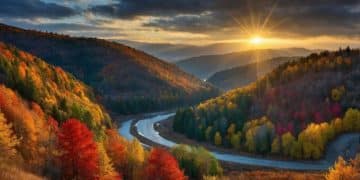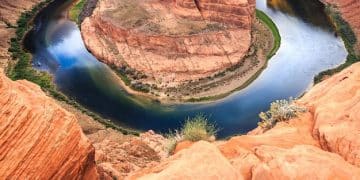Stargazing in US National Parks: Ultimate Guide & Best Spots
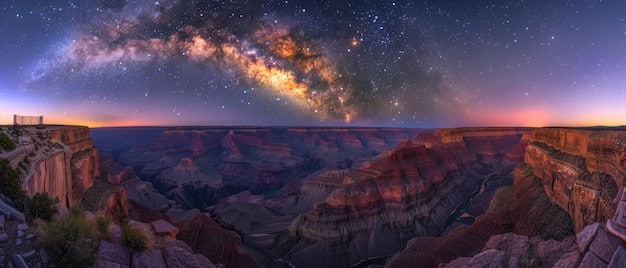
The Ultimate Guide to Stargazing in US National Parks: Locations, Gear, and Tips explores the best national parks for stargazing, essential gear recommendations, and practical tips to enhance your celestial viewing experience, ensuring a memorable journey into the night sky.
Embark on a celestial adventure across America’s stunning landscapes with The Ultimate Guide to Stargazing in US National Parks: Locations, Gear, and Tips. Discover the best spots, essential equipment, and expert advice for unforgettable nights under the stars.
Discovering the Best Stargazing Locations in US National Parks
US National Parks offer some of the darkest and most pristine night skies in the country, providing exceptional opportunities for stargazing. The vast, protected landscapes minimize light pollution, allowing for unparalleled views of celestial wonders.
From shimmering constellations to meteor showers, these parks invite visitors to connect with the cosmos in profound ways.
Why National Parks Are Ideal for Stargazing
National Parks are ideal for stargazing due to several key factors. Firstly, they are often located far from urban centers, which reduces light pollution significantly. Secondly, these parks are committed to preserving their natural environments, including the night sky.
Lastly, ranger programs and astronomy events enhance the stargazing experience with expert guidance and community engagement.
- Minimal Light Pollution: Remote locations ensure darker skies.
- Preserved Environment: Parks protect natural darkness.
- Educational Programs: Ranger-led astronomy events enrich the experience.
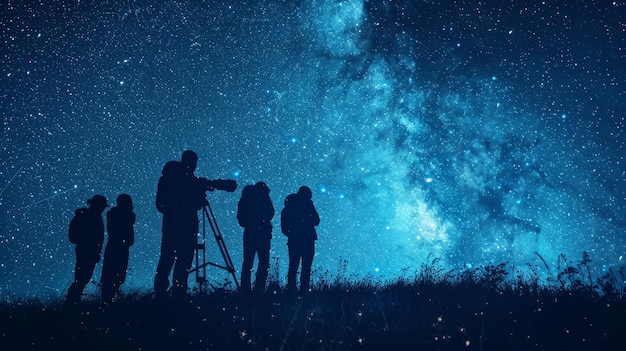
Top National Parks for Stargazing
Several National Parks stand out as premier stargazing sites. Death Valley National Park, with its exceptionally dark skies, is renowned for Milky Way views. Arches National Park in Utah offers stunning red rock formations silhouetted against a star-studded sky.
Acadia National Park in Maine provides unique coastal stargazing experiences.
Ultimately, the best stargazing spots combine dark skies, accessibility, and unique landscapes, making each visit a memorable one.
In conclusion, US National Parks provide unmatched stargazing experiences due to their protected environments and minimal light pollution, making them ideal destinations for astronomy enthusiasts.
Essential Gear for Stargazing in National Parks
To fully enjoy your stargazing experience in US National Parks, having the right gear is essential. The type of equipment you need depends on your level of interest and the kind of observations you plan to make.
From basic binoculars to advanced telescopes, equipping yourself properly ensures a comfortable and rewarding night under the stars.
Basic Stargazing Equipment
For beginners, a few basic items can significantly enhance the viewing experience. Binoculars are a great starting point, offering wider fields of view and ease of use. A red flashlight helps preserve your night vision, while a star chart or stargazing app assists in identifying constellations and celestial objects.
Comfortable seating and warm clothing are essential for long, enjoyable nights.
- Binoculars: Great for wide-field views.
- Red Flashlight: Preserves night vision.
- Star Chart/App: Helps identify constellations.
Advanced Stargazing Tools
For more serious astronomy enthusiasts, advanced tools can bring the cosmos closer. Telescopes offer detailed views of planets, nebulae, and galaxies. A sturdy tripod is crucial for steady observations.
Consider using specialized eyepieces and filters to enhance specific celestial features.
With quality equipment, amateur astronomers can explore the night sky with unparalleled clarity and precision, deepening their appreciation for the universe’s wonders.
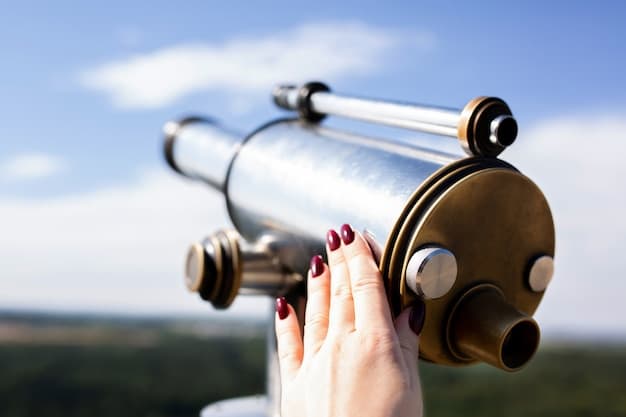
In summary, selecting the right gear, from basic binoculars to advanced telescopes, is vital for an enhanced and fulfilling stargazing adventure in US National Parks.
Understanding Night Sky Conditions in National Parks
Understanding night sky conditions is crucial for planning a successful stargazing trip to US National Parks. Factors such as light pollution, weather patterns, and the phase of the moon significantly impact the clarity and visibility of the night sky.
By monitoring these conditions, stargazers can optimize their viewing experience and witness the celestial wonders in all their glory.
Assessing Light Pollution
Light pollution is a major concern for stargazers. Urban areas emit artificial light that can obscure the stars and diminish the darkness of the night sky. Websites like Light Pollution Map provide detailed information on light pollution levels in different locations.
Choosing parks that are far from urban centers is essential for darker skies. National Parks in remote areas typically offer the best viewing conditions.
Ultimately, minimizing exposure to artificial light ensures that you can fully appreciate the beauty of the night sky during your stargazing adventures.
Weather Patterns and Seasonal Considerations
Weather patterns play a vital role in stargazing. Clear skies are essential for optimal viewing. Check weather forecasts for the chosen National Park before your trip, paying attention to cloud cover and precipitation.
Seasonal changes also influence stargazing conditions, with winter often offering the clearest and darkest skies due to colder, drier air.
- Check Forecasts: Monitor cloud cover and precipitation.
- Seasonal Variations: Winter often has the clearest skies.
Considering weather patterns and seasonal changes ensures better planning and enhances the likelihood of encountering clear, star-filled skies during your adventures.
In brief, awareness of light pollution, weather conditions, and moon phases is vital for maximizing your stargazing experiences in US National Parks, leading to more spectacular celestial observations.
Tips for Enhancing Your Stargazing Experience
Enhancing your stargazing experience in US National Parks involves a combination of preparation, technique, and respect for the environment. These tips will help you observe and appreciate the night sky to the fullest.
With the right knowledge and practices, every stargazing session can become a memorable journey into the cosmos.
Preparing for a Night of Stargazing
Preparation is key to a successful stargazing adventure. Before heading to the park, research the best viewing spots and check the weather forecast. Pack essential gear such as binoculars, red flashlight, star charts, and comfortable seating.
Arrive early to set up equipment and allow your eyes to adjust to the darkness. Also, be sure to inform someone of your plans and location.
- Research Locations: Identify optimal viewing spots.
- Pack Essentials: Bring binoculars, flashlight, and charts.
- Eye Adjustment: Arrive early for your eyes to adjust to darkness.
Best Practices for Stargazing
Following best practices ensures that you observe stars effectively. Use the red flashlight sparingly to preserve night vision. Take regular breaks to rest your eyes and prevent fatigue.
Learn to identify constellations and celestial objects with star charts or stargazing apps. Be patient and persistent, as observing faint objects may take time. Staying disciplined and informed contributes to an improved and more satisfying viewing experience.
In summary, careful preparation and adherence to best practices are crucial for improving your stargazing adventures in the National Parks, as they can lead to the unforgettable moments beneath the starry sky.
Safety and Etiquette in National Parks at Night
Stargazing in US National Parks requires adherence to safety guidelines and etiquette to ensure a pleasant experience for everyone. Respecting the park environment and fellow stargazers is crucial for preserving these natural wonders.
By practicing responsible behavior, visitors can enjoy the night sky while protecting the beauty and tranquility of these spaces.
Ensuring Personal Safety
Personal safety is paramount when stargazing in National Parks due to wilderness conditions. Be aware of wildlife and keep a safe distance from animals. Dress appropriately for the weather, as temperatures can drop significantly at night.
Carry a first-aid kit and a communication device such as a satellite phone or personal locator beacon in areas without cell service.
- Wildlife Awareness: Maintain safe distances from animals.
- Appropriate Attire: Dress warmly for cold temperatures.
- Communication Device: Carry a satellite phone in remote areas.
Respecting Park Environment and Others
Respect for the park environment and other visitors is crucial for preserving the nocturnal experience. Stay on marked trails to avoid disturbing vegetation and wildlife habitats.
Minimize light pollution by using red flashlights and turning off vehicle headlights. Keep noise levels down so everyone can enjoy the serenity of the night sky.
By observing these guidelines, every visitor helps maintain the dark sky and the natural beauty of US National Parks for future generations.
Therefore, upholding safety and etiquette in National Parks is vital for creating a harmonious environment that allows everyone to relish the wonder of the night sky while safeguarding these precious natural resources.
Planning Your Stargazing Trip to a National Park
Planning your stargazing trip to a National Park involves several key steps to ensure a smooth and enjoyable experience. From choosing the right park to securing necessary permits, careful preparation can make all the difference.
By addressing these elements, you can create a trip that aligns with your interests and comfort level, yielding stunning nocturnal encounters.
Choosing the Right National Park
Selecting the right National Park for stargazing depends on your preferences and priorities. Consider factors such as accessibility, light pollution levels, and the park’s astronomy programs. Some parks, like Death Valley and Big Bend, are known for their exceptionally dark skies.
Others, like Bryce Canyon, host regular astronomy events and offer guided tours. Websites like the National Park Service’s official page and DarkSky International can help you assess and compare the potential stargazing experiences in various parks.
- Accessibility: Assess ease of access.
- Astronomy Programs: Look for guided tours.
Permits, Camping, and Accommodations
Certain National Parks require permits for activities such as camping and backcountry exploration. Check the park’s website for permit requirements and make reservations well in advance, especially during peak seasons.
Camping within the park can enhance your stargazing experience, allowing you to stay out under the stars longer. Consider booking accommodations in nearby towns or lodges if you prefer more comfort and access to amenities, especially if the park’s camping sites are booked.
| Key Element | Brief Description |
|---|---|
| 🌌 Location | Choose parks far from cities to minimize light pollution. |
| 🔭 Gear | Bring binoculars, red flashlight, and star charts for optimal viewing. |
| 🌒 Night Sky Conditions | Check weather and moon phases for clear, dark skies. |
| ⛺ Safety | Be aware of wildlife and stay on marked trails for your safety. |
FAQ: Stargazing in US National Parks
▼
Some of the best parks include Death Valley, Big Bend, Arches, and Bryce Canyon. These parks have minimal light pollution and offer clear views of the night sky.
▼
Essential gear includes binoculars, a red flashlight (to preserve night vision), star charts or stargazing apps, and comfortable seating. A telescope can enhance the viewing experience.
▼
Choose parks far from urban areas, use red flashlights sparingly, and avoid using white lights. Check light pollution maps to find the darkest locations in your chosen park.
▼
Some parks require permits for camping and backcountry access. Check the National Park’s website or contact the visitor center to confirm permit requirements before your visit.
▼
Be aware of wildlife, dress appropriately for cold temperatures, and carry a first-aid kit. Stay on marked trails and inform someone of your plans.
Conclusion
Exploring US National Parks for stargazing offers unparalleled opportunities to connect with the cosmos. By understanding the best locations, essential gear, and practical tips, you can make your celestial journey unforgettable. Always prioritize safety and respect for the environment to ensure that these natural wonders remain pristine for generations to come.


